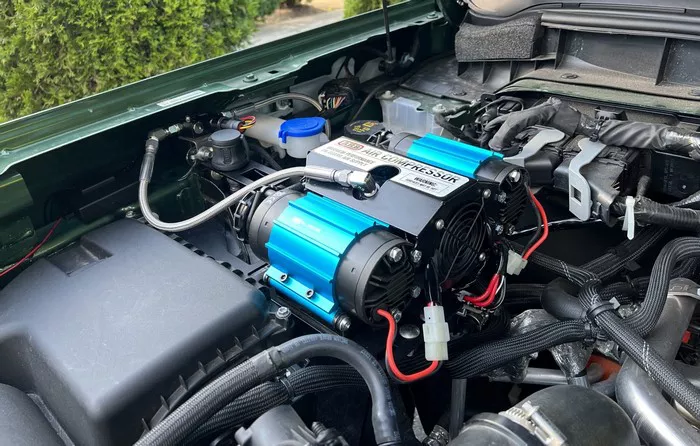Centrifugal air compressors are widely used in industries where large volumes of compressed air are required, such as power plants, manufacturing facilities, and chemical processing plants. These compressors are known for their efficiency, reliability, and ability to deliver continuous airflow with minimal fluctuations. This article will provide an in-depth understanding of centrifugal air compressors, their working principles, components, advantages, and applications.
What is a Centrifugal Air Compressor?
A centrifugal air compressor is a type of dynamic compressor that increases the pressure of air through the use of centrifugal force. Unlike positive displacement compressors (such as reciprocating and rotary screw compressors), which trap and compress air in a confined space, centrifugal compressors rely on high-speed rotating impellers to accelerate and pressurize the air.
These compressors are typically used in applications that require high volumes of compressed air at moderate pressure levels, ranging from 100 to 150 psi (pounds per square inch). They are commonly found in industrial and commercial environments where continuous airflow is essential.
How Do Centrifugal Air Compressors Work
Centrifugal air compressors operate based on the principle of dynamic compression, which involves the conversion of kinetic energy into pressure energy. The working process can be divided into the following key stages:
1. Air Intake
The process begins with atmospheric air entering the compressor through an inlet. The air is filtered to remove contaminants before it reaches the impeller to ensure smooth operation and prevent damage to internal components.
2. Acceleration by Impellers
The core component of a centrifugal air compressor is the impeller, a high-speed rotating disk with multiple curved blades. When the air passes through the impeller, it gains kinetic energy due to the high rotational speed (which can exceed 50,000 RPM in some designs). This rapid acceleration of air increases its velocity significantly.
3. Diffusion Process
After the air exits the impeller, it enters a diffuser—a stationary component that gradually reduces the velocity of the air while converting its kinetic energy into pressure energy. This diffusion process is crucial in increasing the air pressure before it moves further through the system.
4. Pressure Stabilization in the Volute
The pressurized air then moves into a volute casing, which is a spiral-shaped chamber designed to further stabilize the pressure and direct the air toward the outlet. The volute collects the high-pressure air and ensures a smooth transition to the next stage of operation or delivery to the intended application.
5. Cooling and Delivery
Since the compression process generates heat, most centrifugal compressors incorporate intercoolers and aftercoolers to lower the air temperature before it is used. Cooler compressed air is more efficient and reduces the risk of damage to downstream equipment.
Key Components of a Centrifugal Air Compressor
Understanding the essential components of a centrifugal air compressor provides insight into its operation and maintenance requirements. The major components include:
Impellers: High-speed rotating blades responsible for imparting velocity to the incoming air.
Diffusers: Stationary passages that convert kinetic energy into pressure energy.
Volute Casing: A spiral-shaped housing that collects and directs the compressed air.
Bearings and Shafts: Support the rotation of the impellers and maintain mechanical stability.
Intercoolers and Aftercoolers: Heat exchangers that cool the compressed air before delivery.
Inlet Guide Vanes (Optional): Used in some designs to regulate airflow and optimize efficiency.
Advantages of Centrifugal Air Compressors
Centrifugal air compressors offer several benefits that make them suitable for large-scale industrial applications:
High Efficiency: Due to their continuous compression process and absence of reciprocating motion, centrifugal compressors provide higher efficiency compared to other types.
Oil-Free Operation: Most centrifugal compressors operate without the need for lubrication in the compression chamber, producing clean, oil-free air.
Low Maintenance: With fewer moving parts, these compressors require less maintenance compared to reciprocating or rotary screw compressors.
Steady Airflow: Unlike positive displacement compressors, centrifugal compressors provide a consistent and smooth airflow without pulsations.
Compact and Lightweight: Centrifugal compressors tend to be more compact and lighter than other high-capacity compressors.
Scalability: Additional impeller stages can be added to increase pressure output as required.
Common Applications of Centrifugal Air Compressors
Due to their high efficiency and reliability, centrifugal air compressors are widely used in various industries, including:
Power Plants: Used in gas turbine power plants to provide compressed air for combustion processes.
Manufacturing Industries: Essential in automotive, food processing, and textile manufacturing for pneumatic tools and automation systems.
Chemical and Petrochemical Plants: Provide compressed air for chemical reactions and material handling.
Aerospace and Aviation: Used in jet engine starters and air conditioning systems.
Oil and Gas Industry: Supports drilling, refining, and gas processing applications.
Medical and Pharmaceutical Industries: Supplies clean, oil-free compressed air for medical equipment and pharmaceutical production.
Challenges and Considerations
While centrifugal air compressors offer numerous advantages, they also come with some challenges that must be considered:
Higher Initial Cost: The upfront cost of a centrifugal air compressor can be higher compared to reciprocating or rotary screw compressors.
Requires Precise Operating Conditions: Performance is highly dependent on specific operating conditions, such as temperature and humidity.
Not Ideal for Low Air Volume Needs: These compressors are best suited for applications that require a high volume of air rather than intermittent usage.
Complex Maintenance: While they require less frequent maintenance, when maintenance is needed, it often requires specialized knowledge and expertise.
Conclusion
Centrifugal air compressors are an essential part of various industrial and commercial applications, offering high efficiency, oil-free operation, and reliable performance. Their working principle is based on the conversion of kinetic energy into pressure energy, utilizing high-speed impellers, diffusers, and volute casings.
Despite their higher initial cost and complexity, centrifugal air compressors remain a preferred choice in industries requiring large volumes of compressed air. With proper maintenance and optimized operating conditions, these compressors can provide years of reliable service, contributing to enhanced productivity and efficiency across multiple sectors.

